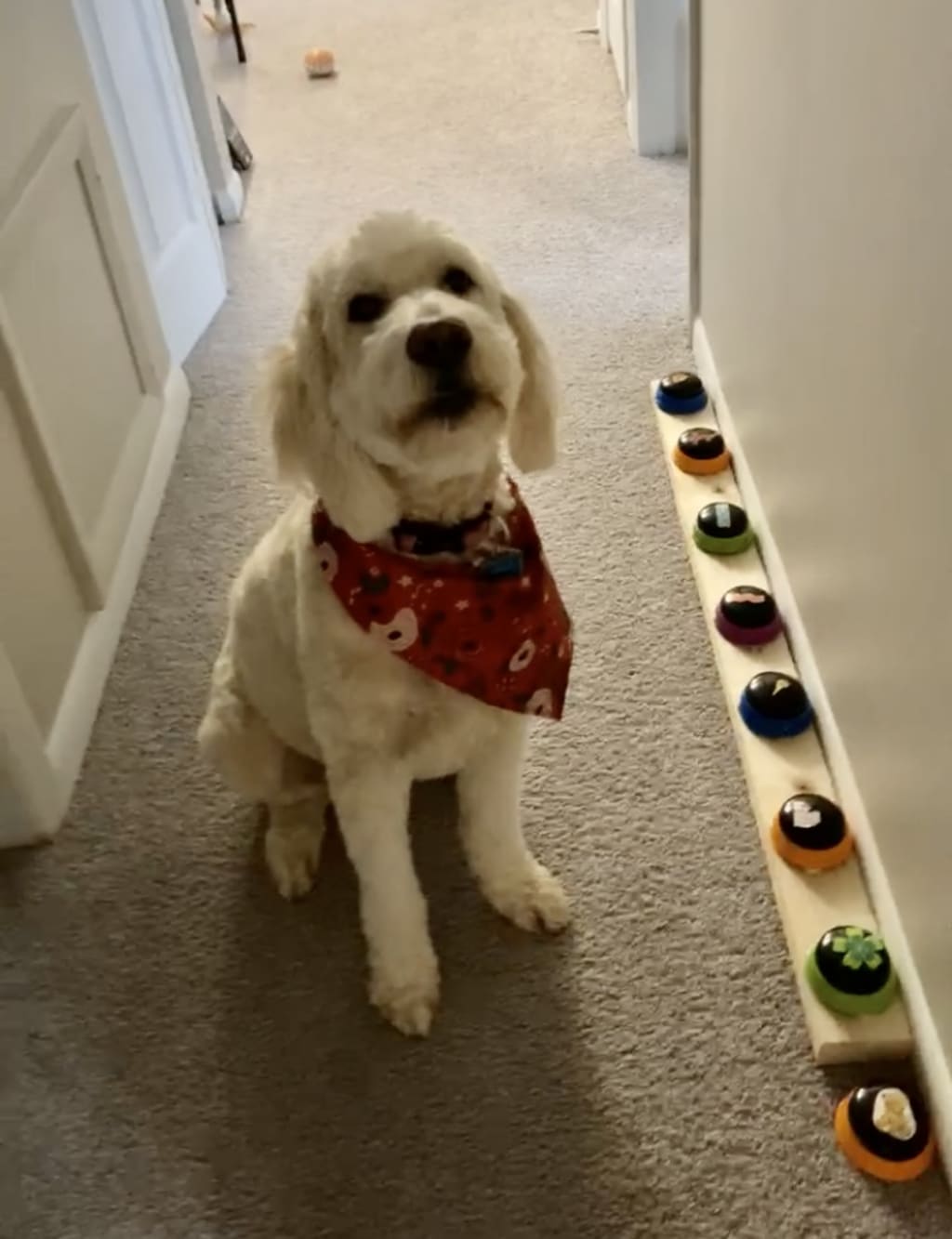The Secrets to Having a Talking Dog
A guide to button-train your best friend

It’s fun to teach your dog a new trick, but it is even more fun to teach them how to talk! Thanks to the use of recordable learning buttons, canines everywhere are finally learning how to speak with their owners. This is a step-by step guide to help you learn how to teach your dog how to use these buttons so you can expand their vocabulary and start chatting with your furry friend.
Teach them the “touch” command. Some dogs are naturally inclined to use their paws to touch everything while others are not. Start early and teach your dog how to “touch” an object. First, teach them “paw”. You can do this by having your dog sit, gently picking up their front paw, saying the word “paw” and giving them a treat. Soon, your dog should be able to offer a paw to you when you simply hold out your hand and say the word. The next step is to ask for their paw, but don’t take it. Instead, put an object, like a ball, under their paw and say “touch” and then reward. Soon, you should be able to point to an object and say “touch” and they will touch it with their paw. Once this behavior is established, it’s time to get some buttons.
Order a pack of four talking buttons on Amazon, or another website. These buttons typically require batteries, so be sure to pick those up as well. Once you have your buttons ready to go, you will need to record your voice. I recommend starting with the word “treat” as this is the easiest to teach. Other easy commands include “attention” or “love” where you will pet and praise your dog, “walk” or “outside” where you will take your dog out, and “play” or “fetch” where you will play with your dog's ball or one of their other favorite toys. Choose your first words carefully, as these words should be something you can do every time your dog asks, at least for the first few weeks. When you are ready to record, hold down the recording button and speak clearly.
Additional Tips on Recording: Avoid words that are highly similar. For instance, you don’t want buttons that rhyme, or are off by a slight sound. (Ex: “walk” and “talk”) These similarities can be really confusing for your dog, especially during the early training. If you do have similar words, be sure to use different colored buttons to give your dog some kind of clue.
Once your buttons are recorded, it’s time to set them up. Pick a space where your dog will have easy access. You may want to consider securing the buttons to the floor with velcro so they don’t slide everywhere as your dog presses them. Or you could get a piece of wood or plastic and secure your buttons to that. You should be able to remove the buttons to change the batteries, so keep that in mind. Also, try to keep the buttons in the same order and position every day so your dog can remember where each one is located. This will help with the learning process.
Become your dog’s personal assistant for the next few weeks. If your dog says “walk” you go for a walk. Even if you’ve just walked together an hour ago. If your dog says “treat” you give them a treat, even if they’ve already had five. When you get to the point that you really can’t do a request, you can add in a “later” command to signify they must wait a bit. Alternatively, you can remove the button temporarily. Just be mindful of how often you do either of these methods, because the early stage is all about training, and your dog will learn more efficiently if the event the button triggers happen consistently whenever he presses the button. Also, if you are going to do an activity on a button, like “walk”, you should press the button right before to strengthen the association between the word and the action.
Add in more words, and start making conversations! You can add in time references, such as “now” or “later” or “morning” or “night”. You could also add subjects, such as your name or the name of another pet. You can also add in additional activities. Then, try to chain words together. Model this by both hitting the buttons, and saying the words together. You can encourage your dog to hit certain buttons by pointing and saying “touch” to help train them. Soon, your dog will be saying things like “walk now” and “play ball!”
Enjoy your conversations with your best friend, and keep exploring with new buttons and even more ways to share ideas with each other.
About the Creator
Isla Kaye Thistle
Aspiring Fiction Writer
Avid animal lover.
Voracious Reader.
Outdoor explorer.
Pet Mom







Comments (1)
That's awesome 😎